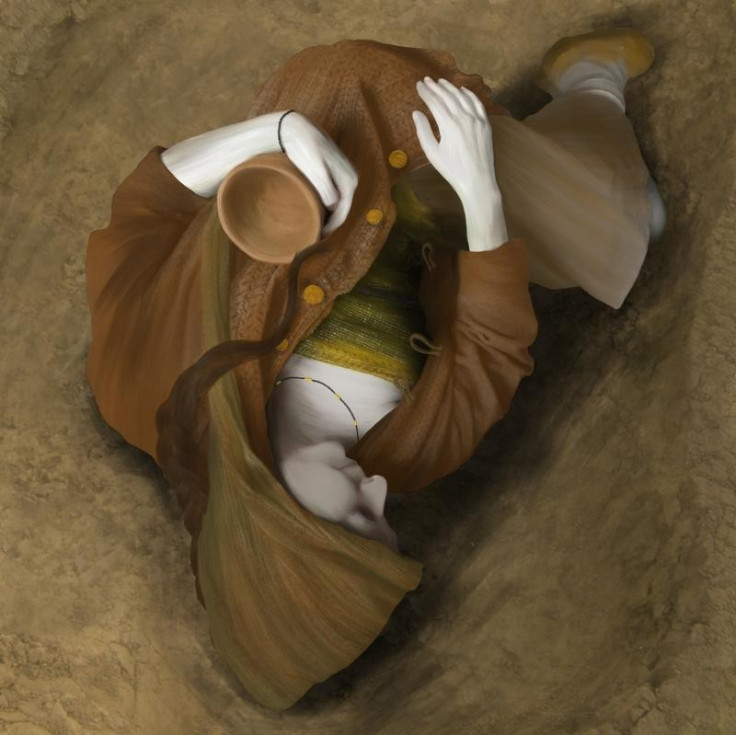4,400-Year-Old ‘Royal’ Woman Found Buried Near Windsor

Archaeologists have dug up the 4,400-year-old skeleton of a woman buried with jewellery near Windsor, leading to speculation the borough's links to the Royal Family go back further than previously thought.
The skeleton was discovered following evacuations at the CEMEX's Kingsmead Quarry in Berkshire, not far from Windsor.
The skeleton, believed to be a female aged around 35-40, was buried wearing a necklace containing small tubular sheet gold beads. Buttons from her garment were made from amber and a bracelet was fashioned from lignite beads.
The elaborate nature of her burial costume has archaeologists believing she could have been a member of the Royal Family as far back as the Copper Age of 2500-2200 BC.
The nature of the burial is also significant, as being buried with gold ornaments in Copper Age Britain was usually reserved for men of high status. This is the first time a woman has been found buried in such a fashion.
Site director Gareth Chaffey, of Wessex Archaeology, who has been excavating the site for the last seven years, said: "It is interesting to think who this woman was within her community. She was probably an important person in her society, perhaps holding some standing which gave her access to prestigious, rare and exotic items.
"She could have been a leader, a person with power and authority, or possibly part of an elite family - perhaps a princess or queen."

The woman was also buried with a beaker placed on her hip, dating her to communities which lived across Europe at around 2,500 BC.
The ornaments the woman was buried with are also of interest to the archaeologists as they originally came from areas all across England and Europe.
The gold may have originated from Southern England or Ireland, and the lignite beads from Eastern England. The amber buttons could have come from as far away as the Baltic, or been made from amber collected from the east coast of England.
Dr Stuart Needham, an expert in Copper Age metalwork, said: "Beaker graves of this date are almost unknown in South East England and only a small number of them contain gold ornaments. The tubular beads that were found at Kingsmead Quarry are certainly rare in Britain, and this gives the grave tremendous research importance".
Andy Spencer, sustainability director of CEMEX UK, said: "Kingsmead Quarry has given us some wonderful finds, rare and interesting ones like this Beaker burial and the Neolithic houses. Today, as well as an insight into the lives of our ancestors, the site is providing valuable building materials for construction."
© Copyright IBTimes 2025. All rights reserved.




















